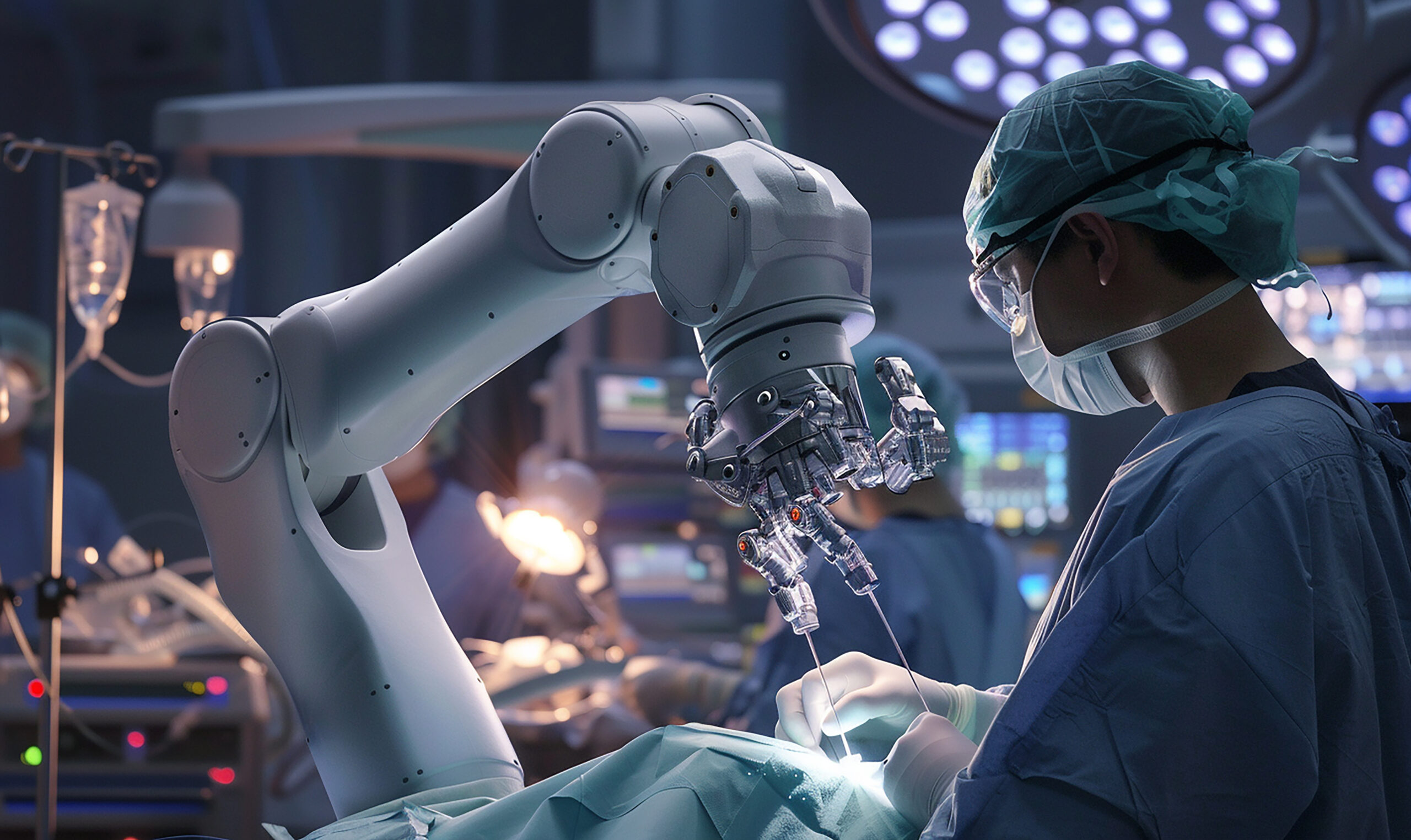Subtotal $0.00
Robot-Assisted Technology in Total Hip & Knee Replacement
Dr. Manoj Kumar Gudluru implements the latest robotic technology for hip and knee joint replacements, ensuring accuracy, faster recovery, and better clinical outcomes.Introduction
The robotic technology was first introduced in 1986 for total joint replacements of the lower extremities. The first robot-assisted hip replacement surgery was performed in 1992. Robot-assisted hip and knee replacement are minimally invasive procedures which involve the use of fully-active or semi-active (haptic or surgeon-guided) robotic systems to assist and enhance the capabilities of orthopaedic surgeons during surgery.
Technology is being rapidly merged with the healthcare industry in order to improve efficacy and provide better clinical outcomes. Likewise, robot-assisted total hip and knee joint replacement have seen a rise in demand in the last two decades.
Robot-Assisted Technology for Total Knee Replacement
Robot-assisted total knee replacement initially requires pre-operative imaging to create a 3-dimensional (3D) reconstruction of the patient’s actual knee. A patient-specific model is then used to estimate the bone to be resected and to select the optimal implant size along with positioning and alignment of the limb.
The method of dynamic referencing is used to evaluate intra-operative joint movements, joint stability, and alignment of the limb. This technology allows the surgeon to make necessary modifications during surgery itself.
Proven Benefits
- Reduced soft tissue and muscle trauma resulting in lesser local inflammation
- Improved accuracy in implant positioning
- Early post-operative recovery
- Faster relief from post-operative pain
- Reduced requirement of analgesics
- Decreased duration of hospital stay
Robot-Assisted Technology for Total Hip Replacement
Total hip arthroplasty (hip replacement) is one of the most commonly performed orthopaedic surgeries worldwide. It is projected that between 2005 and 2030, the number of total hip replacements will increase by 174%.
The most common causes for failed hip replacements or revision surgeries include:
- Recurrent joint instability
- Intra-operative fractures
- Impingement (pressure of joint on surrounding structures)
These can lead to implant dislocation, loosening, and persistent pain. Robotic technology was introduced in hip replacement to address these issues through:
- Pre-operative planning
- Optimizing implant selection
- Accurate calculation of implant size
- Enhanced precision in implant placement and positioning
Steps in Robot-Assisted Hip Replacement
- 3D imaging & CT scan to reconstruct joint anatomy
- Pre-operative planning with computer software
- Intra-operative registration of anatomical landmarks
- Robotic milling (cutting) & reaming (shaping for implant fit)
- Final cup and stem implantation customized for each patient
Advantages
- Improved implant positioning and alignment
- Better fit of femoral and acetabular components
- Wider range of movement
- Reduced injury to muscles and soft tissues
- Lesser incidence of post-operative thigh pain
- Reduced hospital stay
- Lower rate of post-operative dislocations
Conclusion
Robot-assisted total knee and hip replacements have shown better intra-operative and post-operative outcomes compared to conventional methods. The key advantage lies in pre-operative 3D planning, which minimizes human error and ensures accurate implant placement.
Although robotic surgeries involve higher costs, the benefits of faster recovery, fewer complications, and improved outcomes make them the future of joint replacement. With India’s rapidly growing healthcare sector, robotic surgery is becoming more accessible and affordable.




Comments are closed